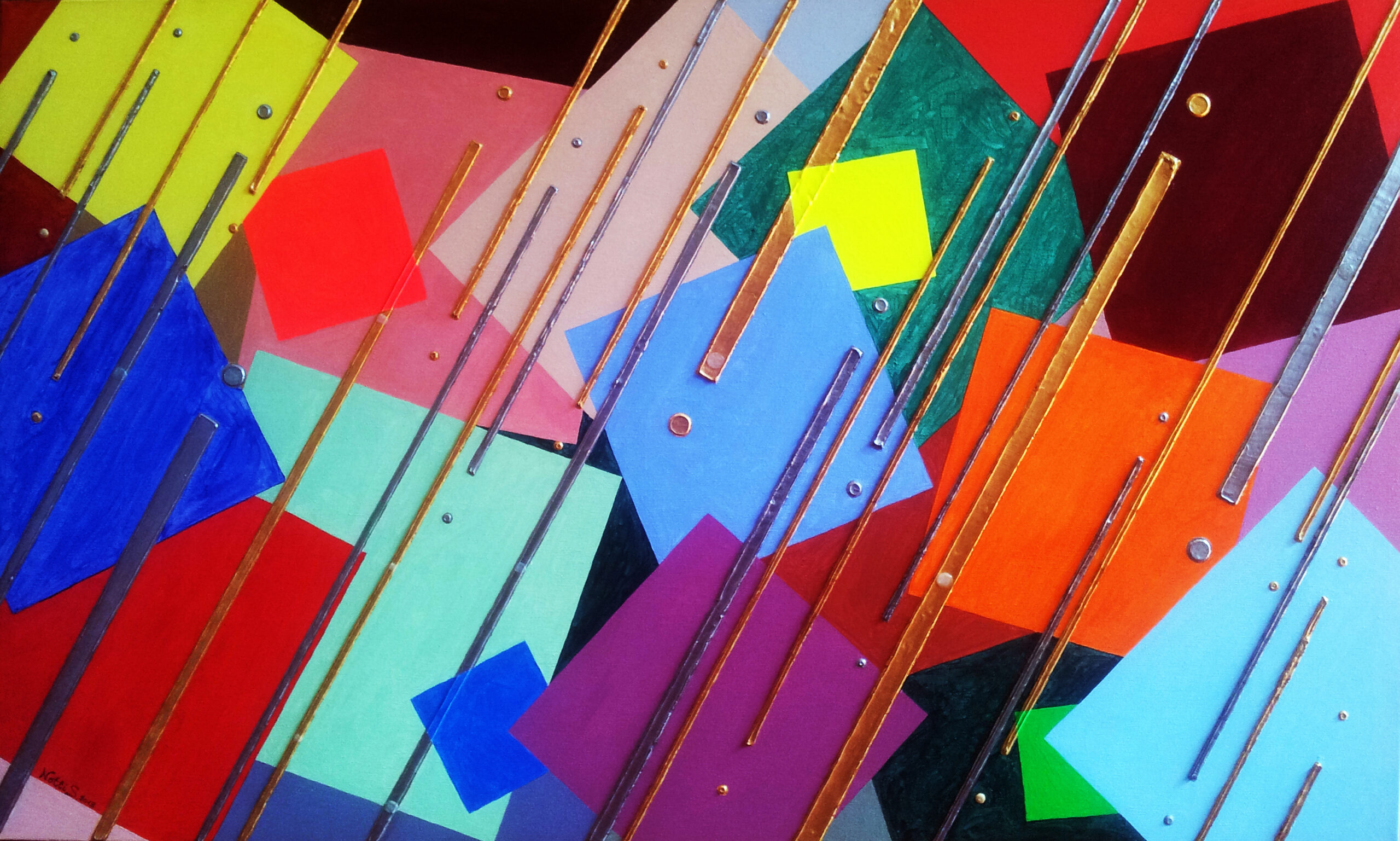Collection Physics Art: When physics becomes art.
Acrylic, phosphorus and pasta to be molded on canvas. 100 x 60 cm. year 2013.
Private collection
Painting graphically reproduces Heisenberg’s Principle of Indeterminacy in quantum mechanics: it is not possible to simultaneously know position and speed of sub-atomic particles
This is because energy that lights them, having a wavelength comparable to theirs, automatically changes its position or the amount of motion.
In the framework, the principle is represented by continuous lines and points: lines represent swipings of particles in motion (as there is no defined position); while points represent position in the absence of movement.
Lines and stitches, alternately gold and silver colored, are made with pastes to be molded to give them thickness, to signify their attempt to escape from the canvas.
Lines are also with different length, width and density, indicating diversity between disrupted particles (particles with higher mass create thicker stripes) and presence of particle clusters.
Overlapping multi-colored square background represents the sub-atomic world; you can imagine that each color represents a different type of particle.
Four squares are made with fluorescent colors, indicating the electronic excitement due to the light impacting on the canvas.
In this condition lines fail to contain matter, which tends to escape three-dimensionally from canvas, generating an overlapping effect on gold and silver strips.
The Principle of Indeterminacy is also reproduced with a day-night effect, as there are other points on the stripes (arranged to form the constellation of sagittarius), made of transparent phosphorus gel.
During the day they are seen only crawls (meaning that the wavelength of daylight or artificial light disrupts particles and only their movement is shown).
In the dark, having phosphorus captured light of day, you will see constellation of sagittarius (light does not disturb particles and location is visible).
Phosphorus is also present on side edges of double box canvas that in the dark lights turquoise, projected on the wall to form a frame of light that fades outwards.
“Physics Art” brings the physics laws inside art. Through painting, physics finally becames art, in particular the cause and effect art, applied to colors, using the perfect physics and mathematics language.
